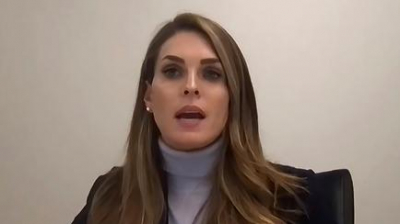Exploring the Truth Behind the Drug Portrayed in "Baby Reindeer"
As a seasoned journalist with a decade of experience delving into complex narratives, I've encountered my fair share of stories that blur the lines between reality and fiction. "Baby Reindeer," a gripping production that has captivated audiences with its raw portrayal of real-life events, has recently thrust one particular substance into the spotlight: GHB. In this extended analysis, we'll dissect the truth behind GHB, separating myths from verifiable facts, and shedding light on its portrayal in the acclaimed production.
Understanding GHB: A Complex Narrative Beyond the Screen
GHB, short for gamma-hydroxybutyrate, is a central nervous system depressant that has garnered attention for its various uses and misuses. Originally developed as an anesthetic, its therapeutic applications have been overshadowed by its reputation as a recreational drug and, in some cases, as a tool for nefarious activities. The portrayal of GHB in "Baby Reindeer" underscores its multifaceted nature, prompting a deeper exploration into its pharmacological properties and societal impact.
Separating Fact from Fiction: Dispelling Common Misconceptions
One of the prevailing misconceptions surrounding GHB is its classification solely as a "date rape drug." While it is true that GHB has been implicated in cases of drug-facilitated sexual assault due to its sedative properties and amnesic effects, this represents only one dimension of its usage. In reality, GHB's effects can vary widely depending on dosage, context, and individual susceptibility, making it imperative to contextualize its portrayal in media and popular culture.
Navigating the Legal Landscape: Regulations and Ramifications
The legal status of GHB varies significantly across different jurisdictions, further complicating efforts to understand its prevalence and impact. While some countries tightly regulate GHB as a controlled substance due to its potential for abuse, others have adopted more lenient approaches, allowing for its legitimate medical use under strict supervision. This patchwork of regulations underscores the need for nuanced discussions surrounding drug policy and harm reduction strategies.
The Human Element: Stories of Struggle and Resilience
Behind every statistic and scientific study lies the human experience of those affected by GHB use and abuse. "Baby Reindeer" poignantly captures the emotional turmoil and psychological complexities inherent in grappling with addiction and trauma. By amplifying the voices of those directly impacted by GHB, we gain a deeper appreciation for the urgency of addressing substance misuse and fostering avenues for recovery and healing.
Towards a Holistic Understanding
In conclusion, the portrayal of GHB in "Baby Reindeer" serves as a poignant reminder of the intricate interplay between fact and fiction, reality and perception. By unraveling the complexities surrounding GHB, we are better equipped to engage in informed discussions, implement evidence-based interventions, and support individuals grappling with substance use disorders. As we navigate the intricacies of the human experience, let us strive for empathy, understanding, and a commitment to fostering healthier communities for all.
Navigating the Complexities of GHB
In the realm of substance use, few substances embody the complexity and nuance of GHB. Its portrayal in "Baby Reindeer" serves as a catalyst for deeper exploration, challenging us to confront the realities of addiction, trauma, and societal perceptions. As we conclude our journey into the heart of GHB, several key takeaways emerge.
Firstly, it is imperative to disentangle fact from fiction, myth from reality, when discussing GHB. While media portrayals may sensationalize its role as a "date rape drug," the truth is far more nuanced, encompassing therapeutic uses, recreational misuse, and the lived experiences of individuals navigating its effects.
Secondly, the legal landscape surrounding GHB underscores the need for comprehensive drug policies that balance public health concerns with individual liberties. By fostering dialogue and collaboration among policymakers, healthcare professionals, and affected communities, we can develop holistic approaches to harm reduction and substance misuse prevention.
Finally, at the heart of the GHB narrative lies the human experience: stories of struggle, resilience, and hope. As we confront the challenges posed by GHB and other substances, let us center our efforts on compassion, understanding, and support for those affected. Through advocacy, education, and community engagement, we can strive towards a future where individuals are empowered to make informed choices and access the resources they need to thrive.
In closing, the journey into the world of GHB is far from over. Yet, armed with knowledge, empathy, and a commitment to change, we can navigate these complexities with clarity and purpose, forging pathways towards healthier, more resilient communities for generations to come.








Embracing the Gusts: Navigating Southern Ontario's Windy Weather
Unveiling the Potential of Hyphenated Technology: A Surge in Mass Spectrometry Market
Empowering Communities: The Impactful Legacy of Siaka Bamba
Tom Baldwin: A Trailblazing Journalist's Impact on British Media
Jonathan Lazare Alperin: Pioneering Mathematician in Geometric Group Theory and Functional Analysis
Empowering Innovation and Compassion: The Inspiring Journey of Mensur Bajramović
Răzvan Avram: Innovator Extraordinaire in Tech Entrepreneurship
Arsen Avetisyan: Pioneering Innovator and Tech Entrepreneur Extraordinaire